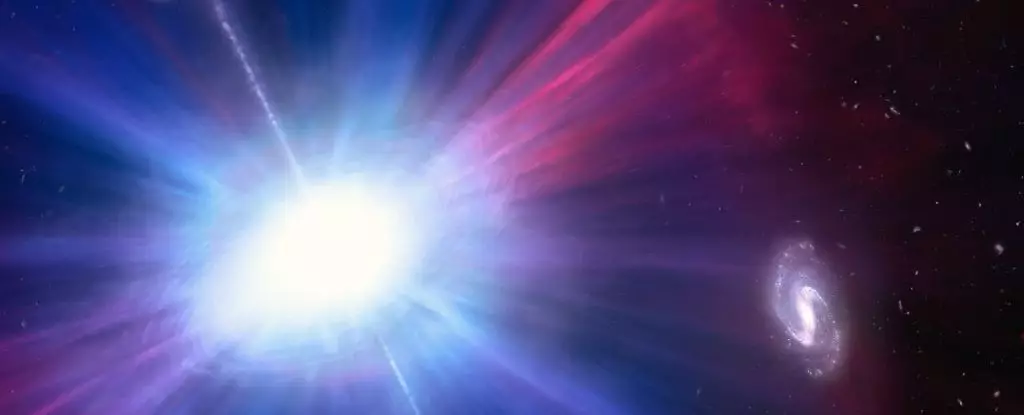Astronomers have recently discovered a perplexing cosmic phenomenon known as luminous fast blue optical transients (LFBOTs). These bizarre explosions, with their exceptional brightness and short duration, have left scientists scratching their heads. Initially believed to be massive supernovae confined within galaxies, a rare LFBOT named the Finch (AT2023fhn) has now been observed in intergalactic space, defying previous assumptions. This unexpected revelation has raised more questions than answers, challenging astronomers to rethink their understanding of these enigmatic occurrences.
Since the first sighting in 2018, only a handful of LFBOTs have been detected, but each discovery has further intensified the mystery surrounding them. These cosmic explosions are remarkably radiant, shining at least ten times brighter than a typical supernova. However, what sets LFBOTs apart is their fleeting nature, resembling a camera flash in the vast expanse of space. Accompanied by their distinctive blue hue, thought to be caused by their extreme temperatures, LFBOTs have left astronomers puzzled about their origin and nature.
Theories and Speculations
Initially, scientists believed that LFBOTs were a result of a particular type of supernova, characterized by the direct collapse of a dying star’s core into a neutron star or black hole. This mechanism requires the progenitor star to be at least eight times the mass of the Sun. An alternative hypothesis suggested that the explosions could be triggered by a black hole consuming an ultradense object, such as a white dwarf star. However, both these theories relied on LFBOTs originating from massive progenitor stars found within galaxies.
The Finch, discovered by the Zwicky Transient Facility on April 10, 2023, has thrown a wrench into these theories. Located approximately 2.86 billion light-years away, this LFBOT was detected in the vast emptiness of intergalactic space, a staggering 50,000 light-years from the nearest spiral galaxy and 15,000 light-years from its nearest dwarf satellite galaxy. This unexpected finding challenges the assumption that LFBOTs solely occur within galaxies undergoing active star formation.
While the supernova hypothesis seems less likely in the case of the Finch, the possibility of the involvement of black holes remains. Scientists propose the existence of an undetectable globular cluster, a dense collection of old stars riddled with black holes, where the explosion might have originated. These black holes, of the intermediate mass variety, could have been feeding on celestial objects within this elusive cluster. Another intriguing idea involves a collision between two neutron stars, one of which could be a magnetar, a highly magnetized pulsar. Such a collision could amplify the resulting explosion, creating a kilonova. However, further theoretical analysis is necessary to ascertain the plausibility of these explanations.
More Questions Than Answers
Astronomer Ashley Chrimes aptly summarizes the state of this perplexing discovery, stating, “The discovery poses many more questions than it answers.” Unraveling the true nature and origins of LFBOTs requires extensive research and a thorough investigation of the numerous possibilities that have emerged. As astronomers continue to delve into the complexities of these cosmic explosions and discover more instances, the enigma surrounding LFBOTs deepens. One thing is certain: the more we uncover, the more awe-inspiring and bewildering these phenomena become.



Leave a Reply